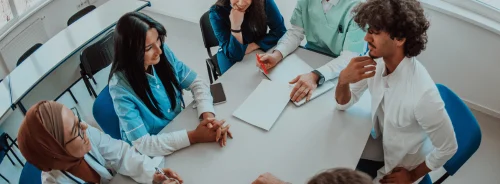Summary: An HIT expert gives his view on how healthcare can be revamped by harnessing technology for existing care modalities rather than overhauling the entire system.
I think the next few years will be characterised by a much better exploitation of systems that are used routinely in the care system. My impression is that we have a lot of new modalities entering the market like tele-monitoring, self-monitoring, wearables and insertables. However, from a hospital perspective, there is no clear evidence that these are changing how the system is working, even if they are well used. Impacting the care system requires much more than technology. It requires adoption. And adoption is hard to build. It is made of education, regulatory environment, societal characteristics, cost, added-value, and trust, to name a few.
The patient chart is a good example. Everybody in a hospital works with patient charts. Most of the time, they are used to record and interact with vital signs, treatments, events. These patient charts usually look like a horizontal temporal timeline with rows of information. We all have these images in mind: pulse, temperature, pressure, etc. A forerunner of the modern chart was developed in Paris and Berlin in the early 19th century for a few variables (Gillum 2013).
It is striking to see how little the concept has changed while the complexity and rate of data and information, and the analytical tools, have exploded. There are a lot of people today advocating that the patient chart and medical record should be completely redesigned and rethought for modern medicine, semantic centred, decision-support driven, interdisciplinary medicine. We are in the 21st century in the data science era, but we still interact with data in the patient records like in the early 19th century. Most of the system I see, they look modern because they are tactile, have nice charts and colours, but they reflect a paradigm from 200 years ago. It’s palaeontology.
On the other hand, we have a lot of technologies that are already in place, and are used daily in medicine. Laboratory, imaging, ECGs, EEGs, etc. These technologies are constantly improved, becoming faster, and more accurate. But they also undergo a silent revolution in being “augmented” using artificial intelligence. So, in a sense, we are and will be experiencing a rebirth of existing technology. I really see advanced analytics being implemented into the existing tools we use daily
Where there is huge potential is data management. It will probably have a lot of impact on acute care and prediction and maybe a little bit less on chronic care. If we are able to exploit data scattered throughout a patient record over five or ten years and use it to predict what could happen in the next five years, we would take great steps without having to invest billions into new technology.
Key Points
- Healthcare management should exploit advances in existing diagnostic and care modalities rather than overhauling system.
- Deep learning has huge potential, but is still in its infancy in the progression towards evidence-based science.
- There is much to be gained from good data use that could save billions of dollars.
Gillum RF (2013) From Papyrus to the Electronic Tablet: A Brief History of the Clinical Medical Record with Lessons for the Digital Age. The American Journal of Medicine, 126(10):853-857.







